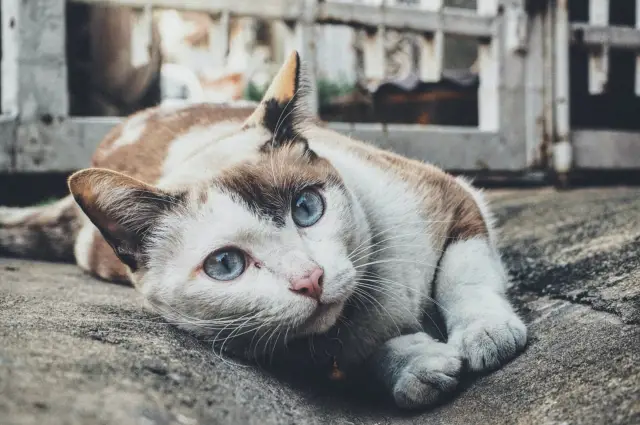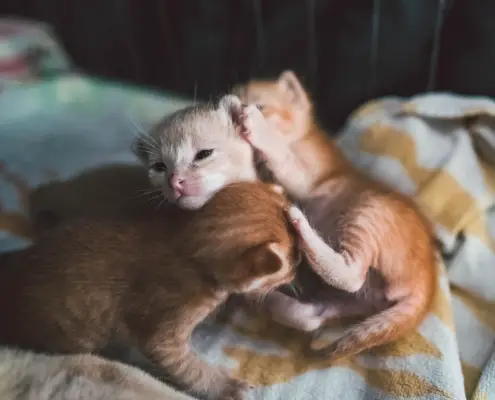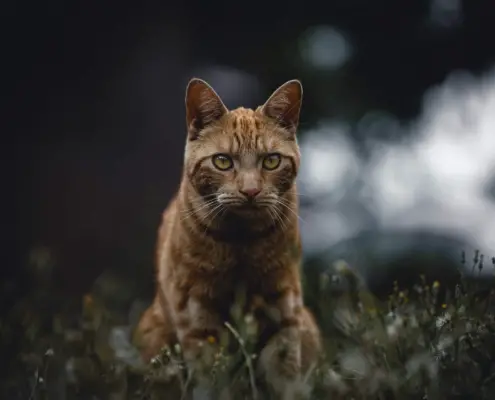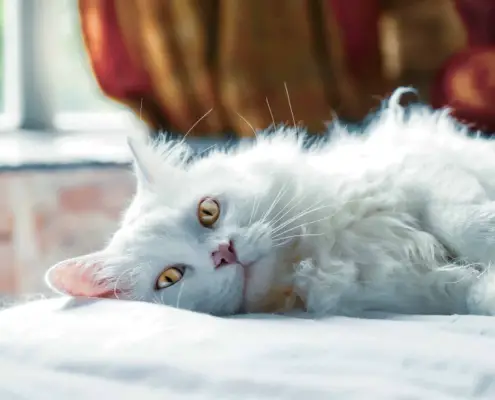
Cats have long been admired for their extraordinary ability to land on their feet, no matter how high they fall from. It is a remarkable phenomenon that has fascinated scientists and cat lovers alike. But what is the secret behind this graceful landing? How do cats manage to twist and turn in mid-air to ensure they always land on their feet? In this article, we will explore the physics behind this extraordinary feat and shed light on the amazing capabilities of our feline friends.
The anatomy of a cat’s body
To understand how cats are able to land on their feet, it is important to take a closer look at their anatomy. Unlike humans and many other animals, cats have a remarkably flexible spine. This flexibility allows them to twist and bend their bodies in ways that seem almost impossible. In addition to their flexible spine, cats have a highly developed sense of balance, which plays a crucial role in their ability to land on their feet.
The role of the vestibular system in a cat’s balance
One of the key components that enables cats to maintain their balance is their vestibular system. Located in the inner ear, the vestibular system is responsible for detecting changes in the cat’s head position and movement. This information is then processed by the brain, allowing the cat to make the necessary adjustments to maintain its balance. The vestibular system is incredibly sensitive in cats, which explains why they are able to land on their feet even in the most challenging circumstances.
The physics behind the cat’s twist in mid-air
When a cat falls, it relies on a combination of its flexible spine and its well-developed sense of balance to perform a mid-air twist. This twist allows the cat to reorient its body and position its feet underneath it, ready for landing. The physics behind this twist is known as the conservation of angular momentum. As the cat twists its body, it is able to change the distribution of its mass, which in turn affects its rotational speed. By adjusting its body position and mass distribution, the cat is able to control its rotation and land on its feet.
How cats adjust their body posture during the fall
As cats fall, they go through a series of rapid adjustments in their body posture to ensure a safe landing. The first step is to extend their front legs and rotate their shoulders to maximize their reach. This allows them to position their paws underneath them, ready for impact. At the same time, cats will arch their backs and rotate their hind legs to align their bodies for a precise landing. These adjustments happen in a matter of milliseconds, showcasing the incredible agility and reflexes of our feline friends.
The importance of a cat’s flexible spine in landing safely
A cat’s flexible spine is crucial for its ability to land safely. When a cat falls, its spine acts as a shock absorber, distributing the impact forces throughout its body. This helps to reduce the risk of injury upon landing. Additionally, the flexibility of the spine allows the cat to bend and twist its body in mid-air, facilitating the necessary adjustments for a successful landing. Without this flexibility, cats would not be able to perform the acrobatic maneuvers required to land on their feet.
Factors that can affect a cat’s ability to land on its feet
While cats are known for their ability to always land on their feet, there are certain factors that can affect their success in doing so. The height from which the cat falls plays a significant role, as cats need sufficient time to perform their mid-air twist and adjust their body posture. If the fall is too short, the cat may not have enough time to react and land on its feet. Additionally, the surface on which the cat lands can also impact its ability to land safely. Soft surfaces, such as grass or carpet, provide a cushioning effect and reduce the risk of injury.
Common myths and misconceptions about cats landing on their feet
There are several myths and misconceptions surrounding cats and their ability to land on their feet. One common misconception is that cats always land on their feet, regardless of the height from which they fall. While cats have incredible reflexes and balance, they still need sufficient time and distance to perform their mid-air twist. Another myth is that cats never get injured when they land on their feet. While cats are generally adept at landing safely, they are not invincible. High falls can still result in injuries, although cats have a higher chance of survival compared to many other animals.
Cat behavior and instinct in relation to landing on their feet
The ability of cats to always land on their feet is not just a result of their physical attributes, but also their instinct and behavior. Cats have a natural instinct to protect themselves and maintain their balance. From a young age, kittens learn to land on their feet through play and exploration. This instinct is honed over time, allowing adult cats to perform the incredible acrobatic maneuvers that we often observe. It is a combination of their physical abilities and their instinctual behavior that enables cats to land on their feet with such grace and precision.
The remarkable ability of cats to always land on their feet
In conclusion, the ability of cats to always land on their feet is a testament to their incredible agility, balance, and flexibility. Through a combination of their flexible spine, well-developed sense of balance, and instinctual behavior, cats are able to perform mid-air twists and make rapid adjustments in their body posture to ensure a safe landing. However, it is important to remember that cats are not invincible and can still be injured from high falls. Nonetheless, their remarkable ability to land on their feet has captivated our curiosity and admiration for centuries, making them truly fascinating creatures.
If you enjoyed my article, I would appreciate you sharing it with your network.

Sima Ndlebe
Sima writes for CatBuzz. He is interested in Cats, Health and Fitness, and Entrepreneurship.
Published: 13 November 2023



